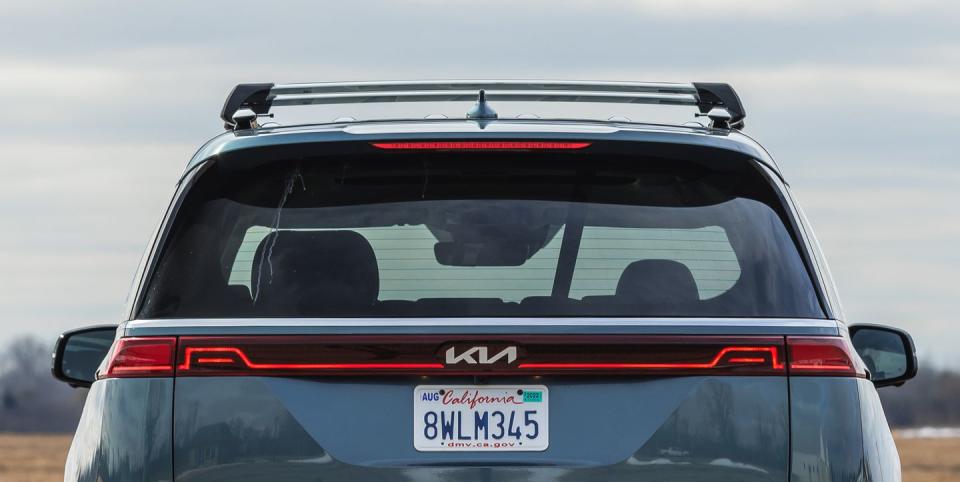Tested: How Much Do Roof Racks Affect Fuel Economy?

In our 75-mph highway fuel-economy test, we found the fuel economy of our long-term Kia Carnival improved by 3 mpg (or 12 percent) with its factory crossbars removed.
Having those bars hanging out in the airstream increases aerodynamic drag, which increasingly hurts fuel economy the faster the vehicle is traveling.
Our results with the crossbars removed equate to a highway driving range increase of roughly 60 miles and a fuel cost savings of about $14 every 1000 miles based on current national average gas prices.
During the long-term test of our 2022 Kia Carnival, we were initially disappointed in our observed fuel economy. Speculating the crossbars installed from the factory—a $360 option—to be the culprit, we opted to remove them to see how much of a difference it made. Removal takes roughly 10 minutes and all the tools are included: remove the endcaps on either side of the crossbars and loosen clamps that attach the bars onto the roof rails that are included on SX and SX Prestige trim levels. Upon removal, we instantly saw increased efficiency numbers, prompting us to make a second attempt at our 75-mph highway fuel-economy test. In the second run, we bested our prior attempt by 3 mpg (25 mpg to 28 mpg), a 12 percent increase and also better than the EPA's highway figure of 26 mpg.
Even though the units fitted to our Carnival are shaped to be aero friendly, they still take quite a toll on its ability to slice through the air. This uptick in drag increases exponentially as speeds rise, so around-town driving will result in a lesser hit to fuel economy than highway motoring.
The additional 3 mpg we gained after parting ways with our crossbars means a roughly 60-mile uptick in highway driving range, from 470 to 530 miles. Hypothetically, if a driver were making a 1000-mile road trip, this makes it possible for only one fuel stop when starting with a full tank as opposed to two stops with the crossbars installed. And, using today's national average gas prices, overall fuel costs would decrease as well, with $14 savings every 1000 miles when using regular 87 octane fuel. Stretching that over a year, and assuming half of driving miles are completed on a highway, a driver could see near triple-digit savings based on the U.S. Department of Transportation Federal Highway Administration's average annual mileage of 13,476. That's roughly enough to cover an entire year of a Disney+ subscription.

 Yahoo Autos
Yahoo Autos 